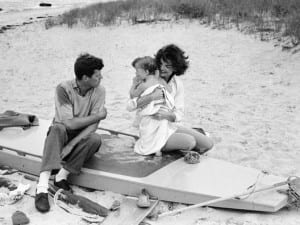Organised by Jeu de Paume in collaboration with the City of Tours, and curated by Chema Conesa, this is the first show in France dedicated exclusively to Hungarian photographer Nicolás Muller; bringing together a hundred images and documents from the archives kept by his daughter Ana Muller.
Although little known in France, Nicolás Muller (Orosháza, Hungary, 1913–Andrín, Spain, 2000) was one of the leading exponents of Hungarian social photography, documenting the working man’s experience and the changing social and political contexts of 1930s Europe. Like many of his compatriots he spent much of his life in exile: born into a bourgeois Jewish family, he left Hungary shortly after the Anschluss in 1938, spending time in Paris, Portugal and Morocco before finally setting in Spain. This experience, and the situations and people he encountered along the way, did much to shape Muller’s work.
Muller worked in a humanist, documentary vein, portraying a strong sense of sympathy for the most modest members of society as social and political contexts changed living standards and livelihood across wartime Europe. This chronologically presented selection follows the career and travels of this curious photographer from 1935 to 1981, as he himself followed agricultural labourers and dockers in the ports of Marseille and Porto, children and street vendors in Tangiers, and the cultural and social figures of Madrid.
Muller was given his first camera at the age of thirteen, and immediately began to explore its capacity to express a certain idea of the world and of human beings – a passion which he maintained even while studying law and politics at university, exploring the Hungarian plains on foot, by train and by bike to photograph men and women, the interiors of houses, scenes of rural life and the workers building the dykes on the River Tisza.
His early work is dominated by this rural aspect of Hungary, and influenced by the avant-garde aesthetic of the day, with its diagonal perspectives and high- and low-angle shots, while his work of the early 1940s reveals his own interaction with Hungarian photographers such as Brassaï, Robert Capa and André Kertész in Paris. Here Muller worked for periodicals such as Match, France Magazine and Regards, before obtaining a visa for Tangiers – the destination for thousands of Jews fleeing from Central Europe, and a city of intense light which roused him to a state of almost febrile creativity.
His years in Tangiers were reportedly the happiest of his life, although he spent his final years in Madrid as a photojournalist and making portraits of notable friends, including Pío Baroja, Camilo José Cela, Eugeni d’Ors, Ramón Pérez de Ayala the pianist Ataúlfo Argenta and the torero Manolete.
Nicolás Muller: Traces of exile, until 31 May, Château de Tours, 25, avenue André Malraux, 37000 Tours, France. For more information visit www.jeudepaume.org.
Follow us on Twitter @AestheticaMag for the latest news in contemporary art and culture.
Credits
1. Nicolás Muller, Casares. Malaga, 1967 © Nicolás Muller.




